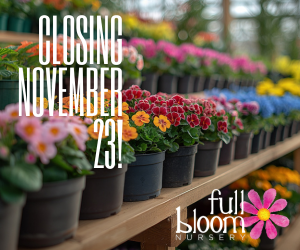BAKU, Azerbaijan (AP) — Young people who attend the United Nations climate talks have a lot to be angry about. They've lost loved ones and months of school. They've lost homes and family farms and connections to their families' native lands.
They haven't lost hope, though. Not yet.
“It has become so tiring for me to be just a poster child,” said Marinel Ubaldo, who by age 16 had watched two back-to-back supersized typhoons destroy entire communities in her native Philippines. Missing a chunk of high school in the aftermath, because there was no school to go back to, was a wake-up call. Now 27, COP29 will be her sixth time attending the summit where leaders negotiate the future she will inherit.
“I guess I'm very pessimistic, but I’m going to be positive that this COP could actually bring more clarity,” she said.
Her pessimism isn't unwarranted. Fewer leaders were in attendance this year, with a backdrop of uncertainty as political will on climate unravels in major countries like the U.S. and Germany. While many passionate youth want to protest, this will be the third straight COP in an authoritarian country with tighter controls on protests and speech. And for many of the young people hardest hit by climate extremes, it's simply difficult and expensive to get to the conference.
“We have this constant challenge of having sometimes the youth forums with spaces at the margins of the decision maker spaces,” said Felipe Paullier, assistant secretary general for youth affairs in the United Nations youth office. That's why the U.N. has been working to institutionalize the role of youth in the climate talks, he said.
And climate change has a disproportionate impact on children around the world. Their growing bodies have a harder time handling extreme heat, which also causes an uptick in premature births and childhood malnutrition, said UNICEF assistant secretary-general Kitty van der Heijden.
“We are simply not doing good enough for children in this world. We are failing children,” she said.
All of that means young people are feeling the burden of speaking up about climate change more than ever. And many of those who come to COP, and even some of the ones who don't, said they feel tired — weighed down by the knowledge that year after year, they show up to speak and don't have a lot to show for it. This was the third year in a row that Earth's projected warming hasn't improved.
“I think for a lot of young people from extremely climate vulnerable nations, it actually it doesn’t feel like much of a choice” to speak out about climate change, said 20-year-old Raaia Fathimath Sharif, from the Maldives.
Sharif's grandmother migrated south to the small island nation's capital, so she has never had the opportunity to see what her family's home island was like. Growing up, after she found out about sea level rise, she had recurring nightmares about her island sinking. She would wake up crying.
“How am I supposed to focus on anything else when when my island, when my home country is at risk?” she asked.
It's that focus that brings many young people to the table even as they question their faith in the possibility that international negotiations can achieve real change. Here at his fourth COP, 15-year-old Francisco Vera Manzanares of Colombia called the U.N. summit a necessary but “very difficult space” to be in. He thinks slow pace of change from countries around the world creates a “credibility crisis” in the institutions that are most needed to keep the goals that require global cooperation within reach.
“People listen to children. But, let's say, it’s different (to) listen than hear,” he said.
That's why he hopes more adults will help children meaningfully advocate for themselves in a crisis where they have the most to lose — and the most to save.
“It's our rights. It's our future. It's our present,” he said.
___
Follow Melina Walling on X, formerly Twitter, @MelinaWalling.
___
The Associated Press’ climate and environmental coverage receives financial support from multiple private foundations. AP is solely responsible for all content. Find AP’s standards for working with philanthropies, a list of supporters and funded coverage areas at AP.org.




















